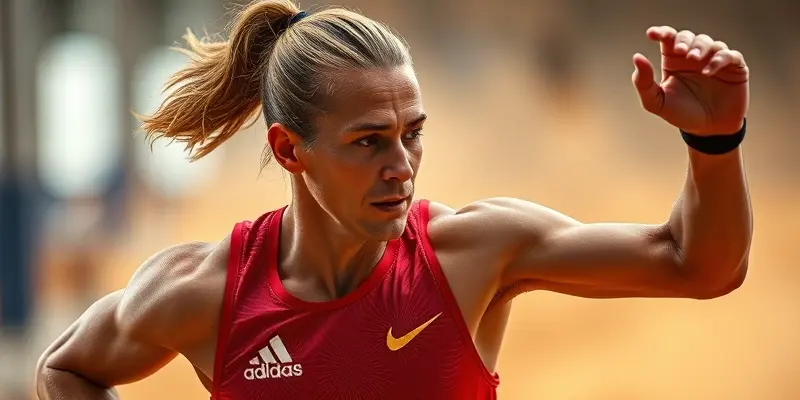Why Stride Length Matters for Injury Prevention
Ever tweaked a knee or strained a hamstring during a run? For many athletes and fitness fans, running injuries seem inevitable. But did you know your stride length—the way you place each foot—could be the hidden culprit behind those nagging pains? Whether you’re training for your first 5K or pushing the limits as a seasoned athlete, dialing in your stride length could be the difference between efficient training and recurring setbacks.
This post explains the science behind stride length and recovery. You’ll learn common mistakes, assessment tips, and actionable strategies to optimize your stride and keep you moving strong.
The Science of Stride Length and Recovery
Think of stride length as the “sweet spot” for your unique mechanics, like the optimal gear in a bicycle. Too long, and you’re fighting yourself; too short, and you’re spinning your wheels.
Research shows that runners naturally select a stride that feels most efficient for their bodies. This isn’t just guesswork—our muscles and nervous system are built to remember patterns that work best for us. The key? Where your foot lands in relation to your center of mass. Imagine if every step landed too far ahead of you—like braking hard at every crosswalk. That’s overstriding, and it puts the brakes on your momentum, wastes energy, and increases injury risk.
Common Mistakes and Injury Risks
Overstriding
Overstriding is when your foot lands well in front of your knees and hips. It’s a recipe for trouble, especially for your knees and hamstrings. Here’s what happens:
- Your landing leg is almost straight, which jolts your knee with every impact.
- The braking effect turns forward momentum into wasted effort.
- Studies show this pattern is linked to higher rates of runner’s knee and hamstring strains.
Understriding
Understriding is less dramatic but still problematic. Too short a stride means you don’t generate enough push-off power, making your run less efficient and more tiring. You miss out on the natural energy storage that comes with a well-timed stride, slowing progress and increasing fatigue.
How to Optimize Your Stride for Injury Prevention
Assessment and Awareness
How do you know if your stride needs work? Start by observing these signs:
- Frequent knee or hamstring pain (especially after runs)
- Visible overreach of your foot in front of your body when running
- Feeling heavy or “braked” during each step
Self-test: Have a friend film you running from the side. Does your foot land directly beneath or ahead of your body? If it’s ahead, try shortening your stride slightly until your foot lands closer under your hips.
Build Strength and Mobility
Strength and mobility are your foundation. Focus on:
- Core strength: Think planks and Russian twists to improve trunk stability.
- Hip mobility: Include lunges and squats for hip strength; try dynamic stretches for better range of motion.
- Hip flexor stretches: Open up the front of your hips for greater extension.
A strong, stable core and flexible hips help maintain good posture and allow for powerful, efficient steps.
Technique Refinement
Small form tweaks pay big dividends:
- Keep an upright posture—don’t hunch or lean back.
- Drive your knee forward, but let your leg extend naturally behind you as you push off.
- Avoid excessive vertical motion (bouncing). Focus on smooth, quick strides directed forward.
Cadence Calibration
Stride length and cadence (steps per minute) are closely tied. Most runners find a good groove between 170-180 steps per minute, though there’s room for individual variation. If you struggle with overstriding, try counting your steps for one minute while running at your usual pace. Gradually increase your cadence by 5% over several weeks; even small changes can decrease impact forces and improve efficiency.
Real-World Benefits – Performance and Long-Term Health
Optimizing your stride won’t just help you avoid injury—it could be your secret weapon for better performance and faster recovery.
- Reduced injury risk means fewer training interruptions.
- Efficient movement patterns lower your energy cost, helping you run farther and recover quicker.
- Better posture and core strength can translate to improved performance in any sport or daily activity.
Imagine finishing every run feeling stronger, not sore—this is the real reward of stride optimization.
Your Stride, Your Foundations
Improving your stride is a process, not a quick fix. Focus on gradual adjustments, strength, and self-awareness. As you refine your mechanics, you’ll not only take your running to new levels but also build a more resilient body for life.
Got a question, or want to share your stride story? Drop a comment below or connect with the GymPulse Club community. Together, we’ll keep moving forward—one strong step at a time.
For more detailed guidance on recovering well and avoiding setbacks, check out our injury recovery checklist.

